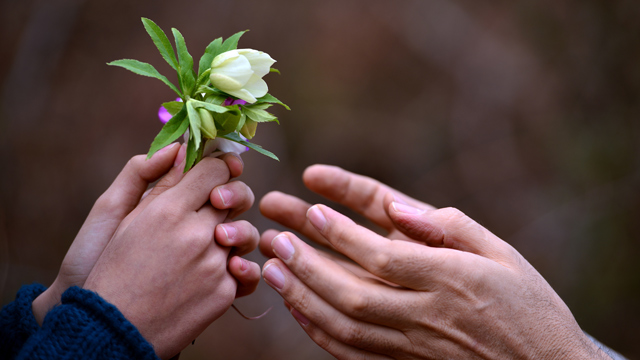
As we come to the portion of Ha’azinu – which is always the Shabbat between Rosh Hashanah and Yom Kippur, what we call Shabbat Teshuvah – I remember the excitement that the Rav always had for this portion (though the Rav gets excited about every portion). The shape of the parashah, the way that it is written in the scroll, is in the shape of the Star of David. Kabbalistically, the Star of David represents the connection between Zeir Anpin and Malchut, or in other words, the connection between above and below, the 99% reality and the 1% physical world. What does this have to do with Shabbat Teshuvah? And what is teshuvah (repentance) and, more specifically, teshuvah between Rosh Hashanah and Yom Kippur?
We know that we are living in the mud – living in the world of Malchut, the 1% world of materialism – and we know that there is no way we can change the mud. We cannot possibly clean the mud, so there is only one solution: to tap up into Zeir Anpin, the level above Malchut, also known as the flawless universe (99%). And how do we do it?
To understand teshuvah, we need to understand what Rav Ashlag writes about teshuvah: it is the transformation of our behavior. Rav Ashlag writes that there is so much good that wants to come from the Creator, but at the same time we are experiencing so much pain and suffering. In the first volume of the Zohar, verse 121, Rav Ashlag explains that the pain and suffering is the key to getting to the peace and harmony and all of the good things that the Creator wants to give us. A person has to get to a point in which every time he experiences pain, he understands that that pain will guide him to all the goodness that he has. Oftentimes, when going through the pain, this understanding doesn't make any sense. Rav Ashlag explains that the cause of pain is simple: when we are receiving, we think only about ourselves and separate from the force of the Creator – which is a force of giving and sharing – and this separation translates into pain in our universe. Pain and suffering will exist until we correct how we receive; understanding that we want to receive only because we know how much pleasure the Creator takes in giving to us, this is called the end of the tikun, the gemar ha’tikun – the repentance of Love. And when a person gets to that ultimate level, all of the past negative actions that that person engaged in turn into good deeds because the person realizes that all of the negativity was a result of disconnecting from the Creator. So, in a way, we need the pain and suffering to remove that selfish agenda, and instead turn it into an exclusive desire to please the Creator.
One of the other things I found about teshuvah comes from Rav Brandwein, the teacher of the Rav. Written in a letter to the Rav regarding the holiday of Tu B'Av, Rav Brandwein explains that when a person engages in teshuvah (repentance) from a place of excitement and love – and not because he is afraid, or because of religiosity, but because of genuine excitement and love for the Creator – all of the negative things he did in the past turn into good deeds. A person who doesn't feel worthy of the Light of the Creator, of receiving the blessing of the Creator, will not be able to receive the Light of the Creator. It doesn't make you humble to say, ‘I am not worthy of it’, and Rav Brandwein tells us that we need to say to the Creator, ‘I would like to borrow my potential from the future me so that I can get the Light of the future to have in the present.’
One last lesson about teshuvah is from Karen Berg. It is written that people who do teshuvah are higher than The Righteous. Why? Karen explains that it is because we are all connected to the Creator with a wire, and when one commits a crime, one cuts that wire between himself and the Creator. When he does repentance, he re-ties the wire – and then that wire becomes shorter.
Thanks and have a Chatimah tovah! Love you all!